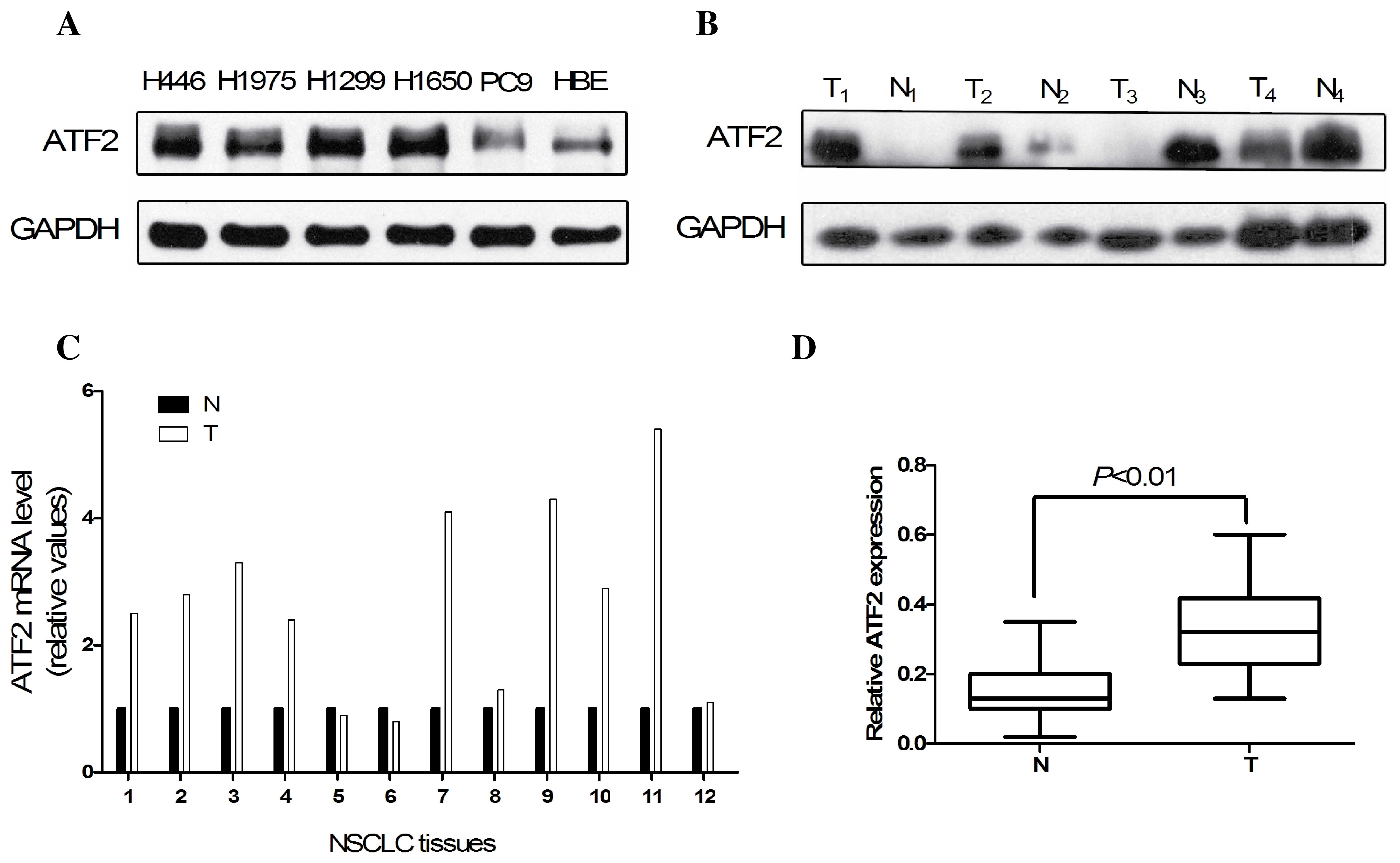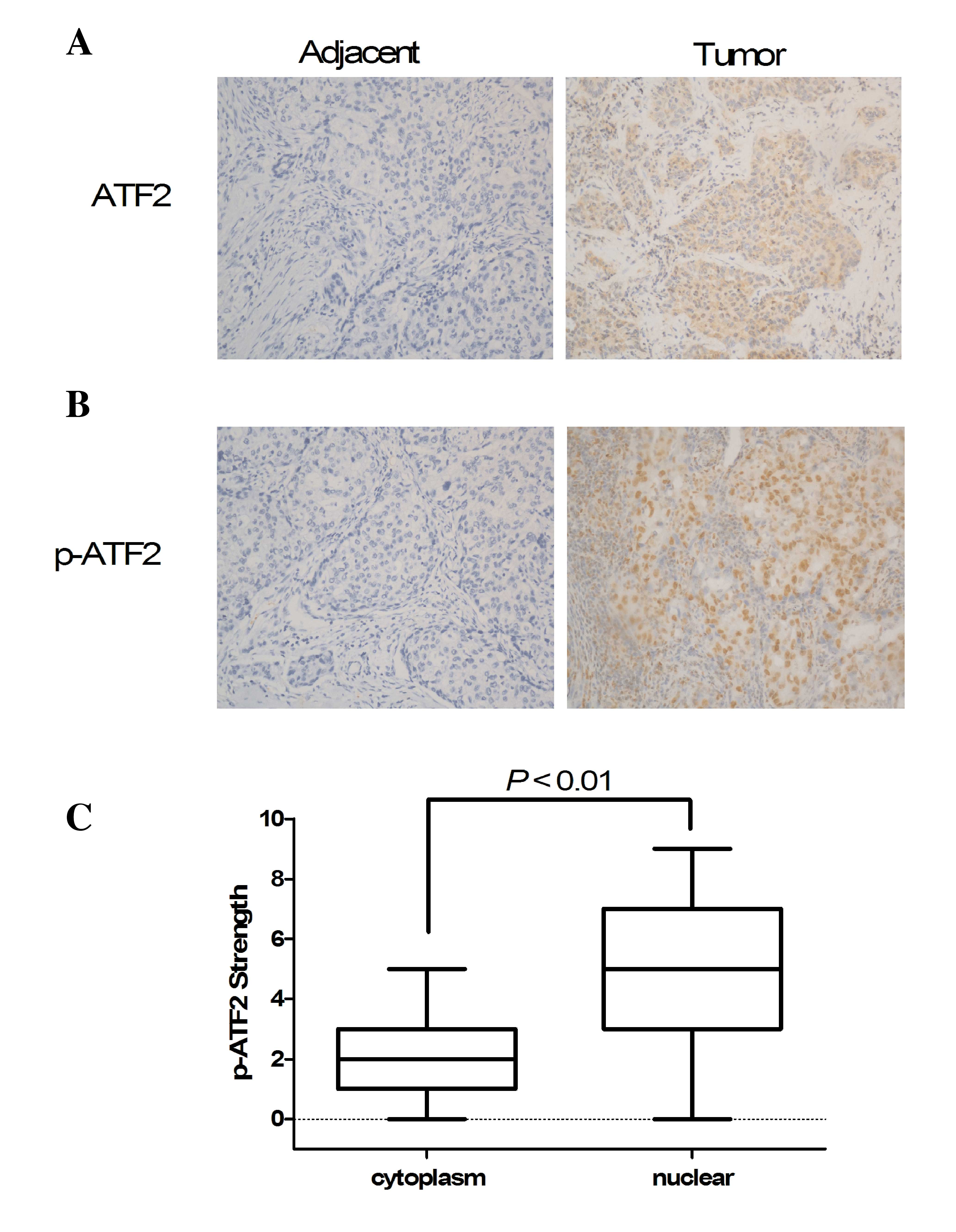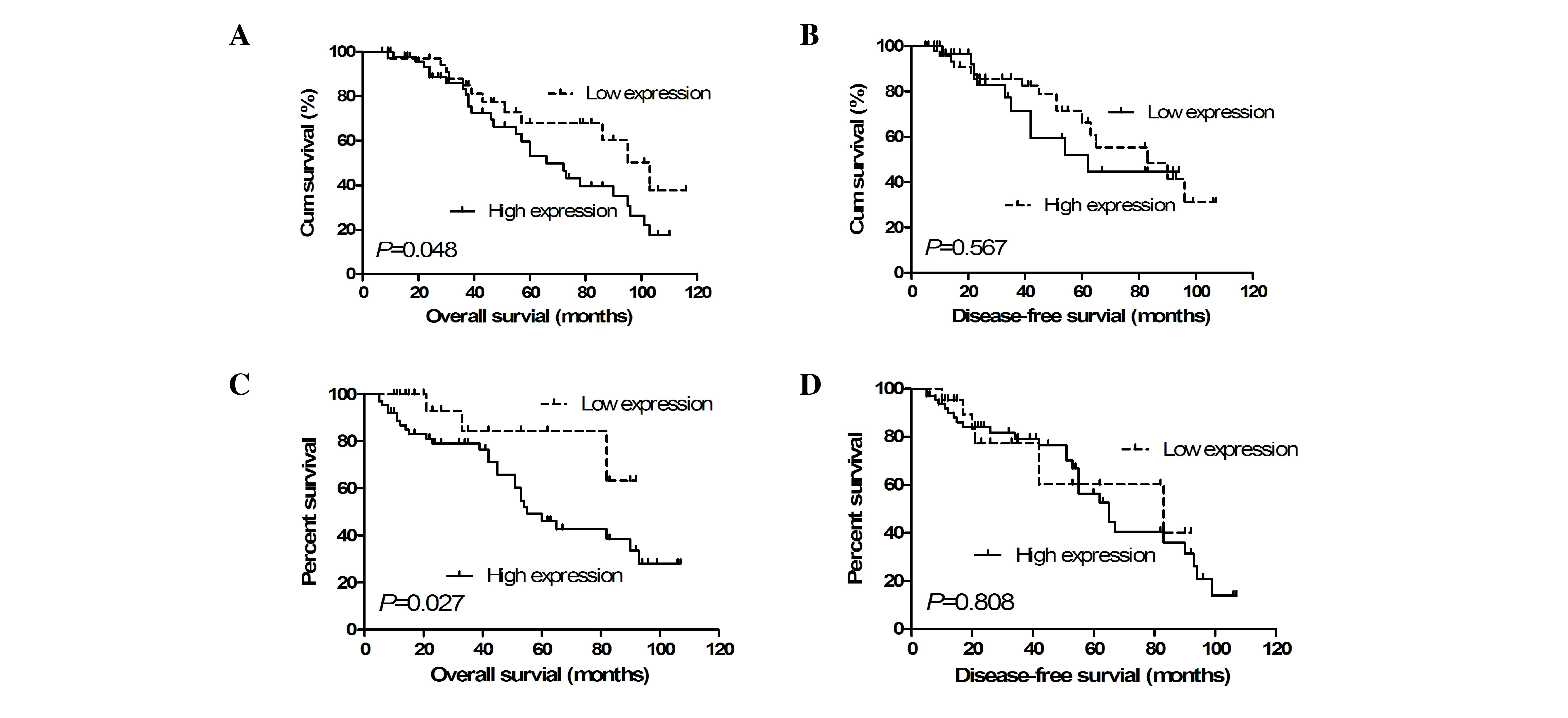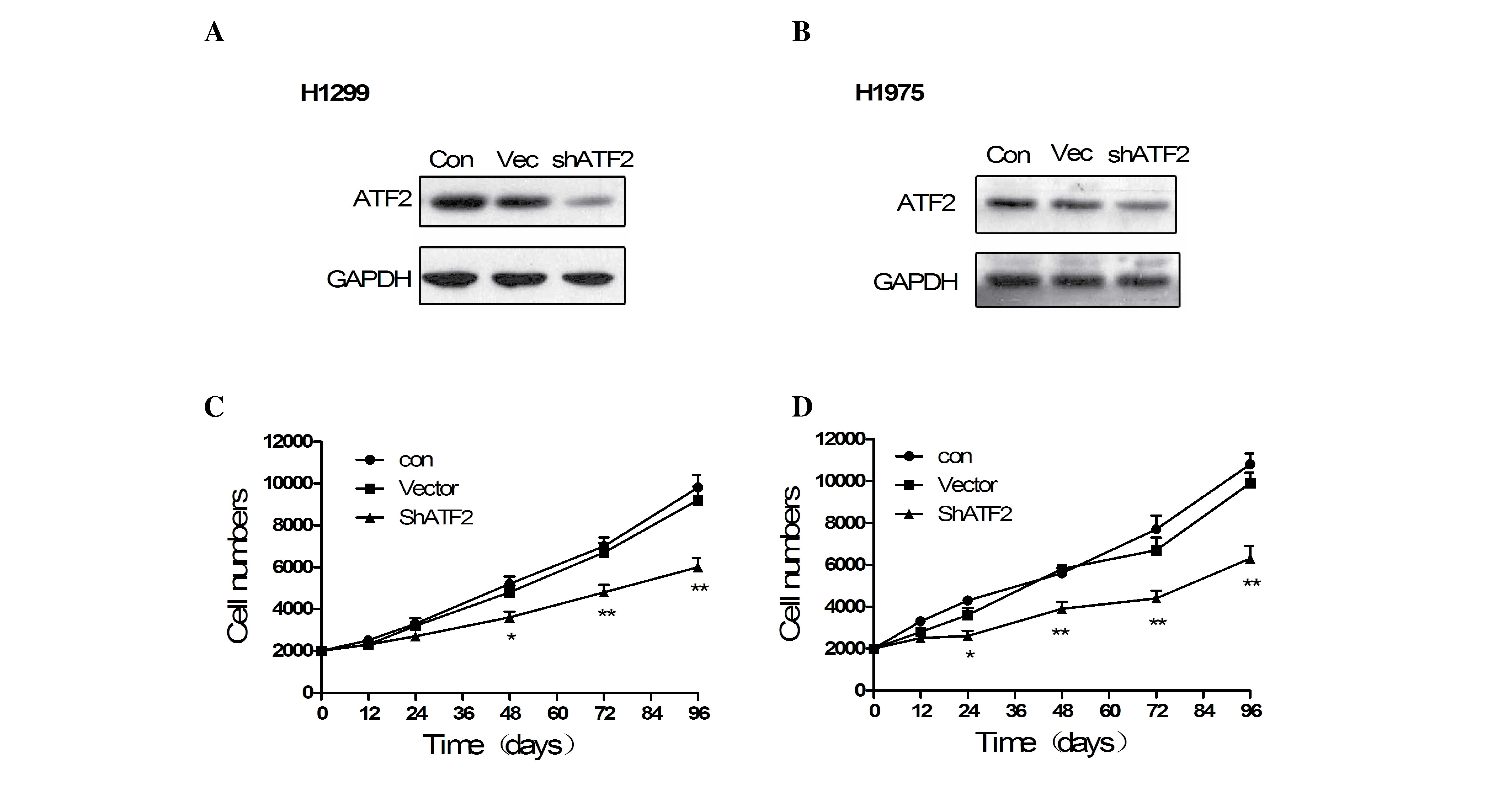|
1
|
Jemal A, Bray F, Center MM, Ferlay J, Ward
E and Forman D: Global cancer statistics. CA Cancer J Clin.
61:69–90. 2011. View Article : Google Scholar : PubMed/NCBI
|
|
2
|
D'Addario G and Felip E: ESMO guidelines
working group: Non-small-cell lung cancer: ESMO clinical
recommendations for diagnosis, treatment and follow-up. Ann Oncol.
4(Suppl 20): S68–S70. 2009.
|
|
3
|
McElnay P and Lim E: Adjuvant or
neoadjuvant chemotherapy for NSCLC. J Thorac Dis. 6(Suppl 2):
S224–S227. 2014.PubMed/NCBI
|
|
4
|
Ellis PM, Coakley N, Feld R, Kuruvilla S
and Ung YC: Use of the epidermal growth factor receptor inhibitors
gefitinib, erlotinib, afatinib, dacomitinib, and icotinib in the
treatment of non-small-cell lung cancer: A systematic review. Curr
Oncol. 22:e183–e215. 2015. View Article : Google Scholar : PubMed/NCBI
|
|
5
|
NSCLC Meta-analyses collaborative group.
Arriagada R, Auperin A, et al: Adjuvant chemotherapy, with or
without postoperative radiotherapy, in operable non-small-cell lung
cancer: Two meta-analyses of individual patient data. Lancet.
375:1267–1277. 2010. View Article : Google Scholar : PubMed/NCBI
|
|
6
|
Spiro SG, Tanner NT, Silvestri GA, et al:
Lung cancer: Progress in diagnosis, staging and therapy.
Respirology. 15:44–50. 2010. View Article : Google Scholar : PubMed/NCBI
|
|
7
|
Lee IT, Lin CC, Cheng SE, Hsiao LD, Hsiao
YC and Yang CM: TNF-α induces cytosolic phospholipase A2 expression
in human lung epithelial cells via JNK1/2- and p38 MAPK-dependent
AP-1 activation. PloS One. 8:e727832013. View Article : Google Scholar : PubMed/NCBI
|
|
8
|
Bengoa-Vergniory N, Gorroño-Etxebarria I,
González Salazar I and Kypta RM: A switch from canonical to
noncanonical Wnt signaling mediates early differentiation of human
neural stem cells. Stem Cells. 32:3196–3208. 2014. View Article : Google Scholar : PubMed/NCBI
|
|
9
|
Lopez-Bergami P, Lau E and Ronai Z:
Emerging roles of ATF2 and the dynamic AP1 network in cancer. Nat
Rev Cancer. 10:65–76. 2010. View
Article : Google Scholar : PubMed/NCBI
|
|
10
|
Bhoumik A, Lopez-Bergami P and Ronai Z:
ATF2 on the double-activating transcription factor and DNA damage
response protein. Pigment Cell Res. 20:498–506. 2007. View Article : Google Scholar : PubMed/NCBI
|
|
11
|
Lau E and Ronai ZA: ATF2-at the crossroad
of nuclear and cytosolic functions. J Cell Sci. 125:2815–2824.
2012. View Article : Google Scholar : PubMed/NCBI
|
|
12
|
Shah M, Bhoumik A, Goel V, et al: A role
for ATF2 in regulating MITF and melanoma development. PLoS Genet.
6:e10012582010. View Article : Google Scholar : PubMed/NCBI
|
|
13
|
Lau E, Kluger H, Varsano T, et al: PKCε
promotes oncogenic functions of ATF2 in the nucleus while blocking
its apoptotic function at mitochondria. Cell. 148:543–555. 2012.
View Article : Google Scholar : PubMed/NCBI
|
|
14
|
Varsano T, Lau E, Feng Y, et al:
Inhibition of melanoma growth by small molecules that promote the
mitochondrial localization of ATF2. Clin Cancer Res. 19:2710–2722.
2013. View Article : Google Scholar : PubMed/NCBI
|
|
15
|
An JJ, Shi KJ, Wei W, et al: The
ROS/JNK/ATF2 pathway mediates selenite-induced leukemia NB4 cell
cycle arrest and apoptosis in vitro and in vivo. Cell Death Dis.
4:e9732013. View Article : Google Scholar : PubMed/NCBI
|
|
16
|
Laskin WB and Miettinen M: Epithelioid
sarcoma: New insights based on an extended immunohistochemical
analysis. Arch Pathol Lab Med. 127:1161–1168. 2003.PubMed/NCBI
|
|
17
|
Song H, Ki SH, Kim SG and Moon A:
Activating transcription factor 2 mediates matrix
metalloproteinase-2 transcriptional activation induced by p38 in
breast epithelial cells. Cancer Res. 66:10487–10496. 2006.
View Article : Google Scholar : PubMed/NCBI
|
|
18
|
Knippen S, Löning T, Müller V, et al:
Expression and prognostic value of activating transcription factor
2 (ATF2) and its phosphorylated form in mammary carcinomas.
Anticancer Res. 29:183–189. 2009.PubMed/NCBI
|
|
19
|
Schmittgen TD and Livak KJ: Analyzing
real-time PCR data by the comparative C (T) method. Nat Protoc.
3:1101–1108. 2008. View Article : Google Scholar : PubMed/NCBI
|
|
20
|
Yamada H and Sano Y: The biotinylation of
the rabbit serotonin antibody and its application to
immunohistochemical studies using the two-step ABC method.
Histochemistry. 83:285–289. 1985. View Article : Google Scholar : PubMed/NCBI
|
|
21
|
Zhao Y, Li Y, Han J, et al: Helicobacter
pylori enhances CIP2A expression and cell proliferation via
JNK2/ATF2 signaling in human gastric cancer cells. Int J Mol Med.
33:703–710. 2014.PubMed/NCBI
|
|
22
|
Bhoumik A, Huang TG, Ivanov V, et al: An
ATF2-derived peptide sensitizes melanomas to apoptosis and inhibits
their growth and metastasis. J Clin Invest. 110:643–650. 2002.
View Article : Google Scholar : PubMed/NCBI
|
|
23
|
Maekawa T, Shinagawa T, Sano Y, et al:
Reduced levels of ATF-2 predispose mice to mammary tumors. Mol Cell
Biol. 27:1730–1744. 2007. View Article : Google Scholar : PubMed/NCBI
|
|
24
|
Berger AJ, Kluger HM, Li N, et al:
Subcellular localization of activating transcription factor 2 in
melanoma specimens predicts patient survival. Cancer Res.
63:8103–8107. 2003.PubMed/NCBI
|
|
25
|
Duffey D, Dolgilevich S, Razzouk S, Li L,
Green R and Gorti GK: Activating transcription factor-2 in survival
mechanisms in head and neck carcinoma cells. Head Neck.
33:1586–1599. 2011. View Article : Google Scholar : PubMed/NCBI
|
|
26
|
Knippen S, Löning T, Müller V, et al:
Expression and prognostic value of activating transcription factor
2 (ATF2) and its phosphorylated form in mammary carcinomas.
Anticancer Res. 29:183–189. 2009.PubMed/NCBI
|
|
27
|
Zhao Y, Li Y, Han J, et al:
Helicobacter pylori enhances CIP2A expression and cell
proliferation via JNK2/ATF2 signaling in human gastric cancer
cells. Int J Mol Med. 33:703–710. 2014.PubMed/NCBI
|
|
28
|
Bhoumik A, Huang TG, Ivanov V, et al: An
ATF2-derived peptide sensitizes melanomas to apoptosis and inhibits
their growth and metastasis. J Clin Invest. 110:643–650. 2002.
View Article : Google Scholar : PubMed/NCBI
|
|
29
|
Deng X, Liu H, Huang J, et al: Ionizing
radiation induces prostate cancer neuroendocrine differentiation
through interplay of CREB and ATF2: Implications for disease
progression. Cancer Res. 68:9663–9670. 2008. View Article : Google Scholar : PubMed/NCBI
|













